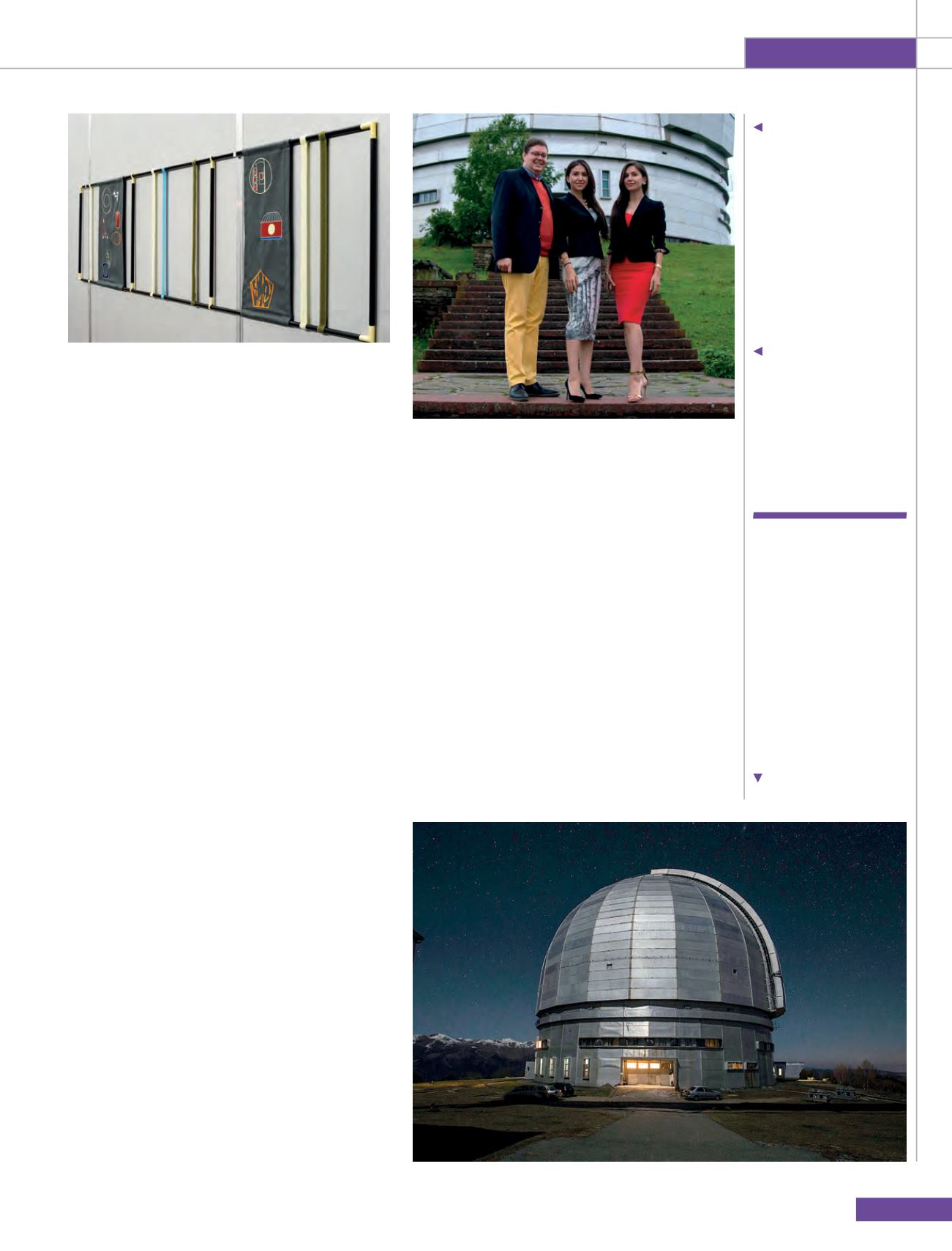
ROOM
103
Space Lounge
Curators Simon Mraz,
Madina Gogova and
Mariana Gogova in front of
the observatory.
Far left: Engelbert’s
‘Space emblem for GB’
was dedicated to the
Russian space designer
Galina Balashova.
A unique
scientific
research
centre, a place
where history
meets modern
astrophysics
The observatory’s working structure is
composed of two divisions and a support team.
The optical division is made up of 12 components,
including the Laboratory of Extragalactic
Astrophysics and Cosmology, the Laboratory
for Stellar Magnetism Study, the Laboratory of
Spectroscopy and Photometry of Extragalactic
Objects, the Laboratory of Stellar Physics, the
Advanced Design Laboratory, the Observations
Support Laboratory, the Extragalactic Systems
Investigation Group, the High-resolution Methods
in Astronomy Group, the Relativistic Astrophysics
Group and the BTA technical support team.
The radio astronomical division includes the
Radio Astrophysics Laboratory (made up of the
Group for Study of Galaxies and Cosmology and
the Group of Active Galactic Nuclei Investigation),
the Laboratory of Continuum Radiometers, the
Group of automatic control systems, the Geodetic
Measurements Group, the Group of Continuum
Observations, the Group of the Sun Study, and the
RATAN-600 technical support team.
The observatory also has a branch in St Petersburg
and the support sections of the observatory include
an educational component with a PhD in physics and
astronomy. Overall, it is a self-contained scientific
centre, with its employees living only a short ride
away from their main place of work and for the most
part rarely leaving the general vicinity.
Inspiring location
One of the most fascinating and unique aspects
of the observatory and the village of Nizhny
Arkhyz is the location, as they are situated in
what is essentially the middle of the ancient
kingdom of Alania.
Science meets history here, as only a short walk
away from the village centre are the remnants of
the town of Maas, a medieval Alanian town which
ceased to exist sometime in the 12th century.
The Northern Zelenchuk cathedral in Maas was
built around the 10th century and is one of three
The Large Altazimuth
Telescope (LAT).
cathedrals that are still left standing in what used
to be a bustling medieval town.
The surrounding area is home to the ruins of
almost a dozen smaller churches and multiple
pagan sites dating as far back at the sixth
century. A number of these sites are believed
to be ancient astronomical observatories that
pre-date the Christian era in this area, making
the location’s astronomical heritage well over a
thousand years old.
It’s hardly surprising that artists would find
this enigmatic location inspirational. In the
autumn of 2016, a joint project by the Special
Astrophysical Observatory of the Russian Academy
of Science, the Karachay-Cherkess Ministry of
Culture, Austrian Cultural Forum Moscow, Gogova
Foundation and Section A Wien, Vienna, with the
Federal Chancellery of Austria put on a unique
exhibit called ‘The Observatory’.
MinKult Tscherkessk
Evgeny Rodin


